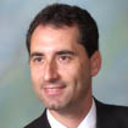Triological thesis: concurrent endoscopic sinus surgery and cosmetic rhinoplasty: rationale, risks, rewards, and reality.
キーワード
概要
OBJECTIVE
To examine the effect of concurrent endoscopic sinus surgery (ESS) on the postoperative course of cosmetic rhinoplasty (CR), identify any specific contraindications, and to develop more useful treatment regimen in patients undergoing concurrent ESS and CR.
METHODS
Retrospective case-control study.
METHODS
Consecutive patients undergoing CR (performed by the principal investigator (PI) in a tertiary care academic practice) at the same operative setting as ESS from June 2004-June 2007 were identified. Additionally, patients undergoing CR (also by the PI) without ESS over the same time period (matched for gender, age, and rhinoplasty approach and techniques) were identified and used as control subjects. The office and hospital charts of these patients were reviewed for details of pre-, intra-, peri-, and postoperative care, preoperative CT scans as well as for patient and physician observations. Specifically noted were details regarding the type of cosmetic changes sought, course of symptoms of chronic sinusitis, prior treatment, surgical techniques used for both ESS and CR, and postoperative treatment with antibiotics and corticosteroids. Additionally, a literature review of articles describing concurrent CR and ESS was performed.
RESULTS
Thirteen patients were identified who underwent ESS at the same time as CR. There were no cases of cerebrospinal fluid leak, epistaxis, orbital complications, septal perforation, cellulitis or saddle nose deformity. No correlation was found between sinus surgery performed and need for revision surgery (CR or ESS) or postoperative infections. However, the time to patient reported resolution of postoperative nasal swelling was significantly higher in patients undergoing concurrent ESS/CR compared to CR only (dorsal swelling: 9.62 +/- 6.18 (ESS/CR) vs. 5.85 +/- 1.95 (CR) weeks, P = .0469; nasal tip swelling: 19.31 +/- 13.02 (ESS/CR) vs. 10.38 +/- 2.96 (CR) weeks, P = .0240, unpaired t test). The same relation held true for doctor noted postoperative edema (nasal dorsal edema: 10.62 +/- 7.32 (ESS/CR) vs. 6.31 +/- 2.72 (CR) weeks, P = .0582; nasal tip edema: 21.46 +/- 15.66 (ESS/CR) vs. 12.23 +/- 4.10 (CR) weeks, P = .0508, unpaired t test). Among patients who underwent concurrent ESS and CR, this time was highly correlated with the severity of sinus disease on preoperative CT scanning (r(2) = 0.8573, P < .0001). A greater need for postoperative corticosteroid injections in the ESS/CR group was suggestive but not statistically significant (30.8% vs. 0%, P = .0957).
CONCLUSIONS
While our data supports concurrent ESS and CR as safe, our findings suggest that the presence and treatment of concurrent sinonasal disease prolongs the patients' recovery from CR. This may be due to the effects of sinus pathology and manipulation of sinonasal venous and lymphatic drainage patterns or could be due to subclinical infectious soiling of rhinoplasty tissue planes. We recommend a two-team approach to promote excellent surgical technique, avoid surgeon fatigue, and enhance patient care. We recommend adequate medical management of chronic sinusitis prior to surgery, pre, intra and postoperative antibiotic coverage, appropriate postoperative sinus toilet beginning 1 week after surgery and careful and close patient follow-up to optimize results. Most importantly, we advocate close coordination of sinonasal and rhinoplastic care in a two-team approach to maximize care.


